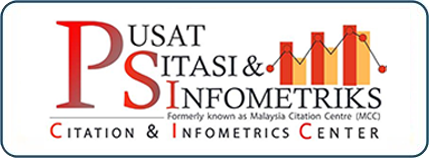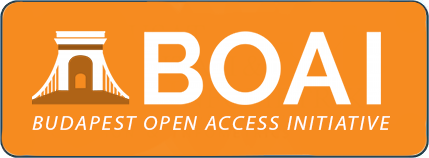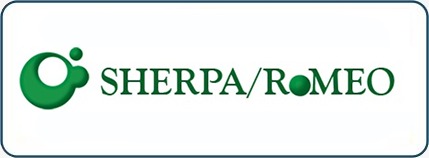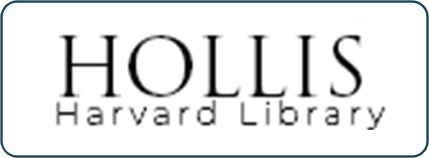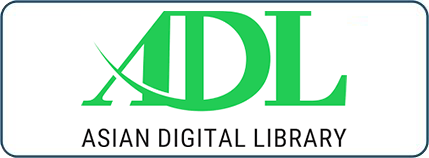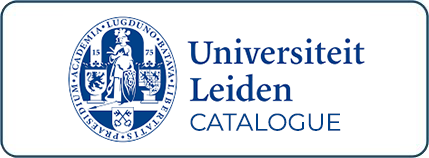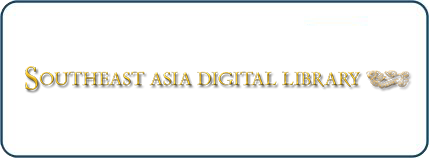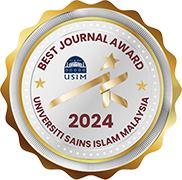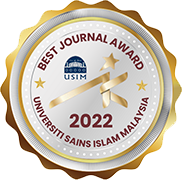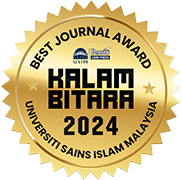PENGGUNAAN SARUNG TELUR MENTADAK DALAM PERUBATAN TRADISIONAL CINA MENURUT PERSPEKTIF FIQH KEPENGGUNAAN
THE USE OF MANTIDIS OOTHECA IN TRADITIONAL CHINESE MEDICINE ACCORDING TO THE FIQH CONSUMERISM PERSPECTIVE
DOI:
https://doi.org/10.33102/mjsl.vol12no3.616Keywords:
Pharmaceutical, mantidis ootheca, mantis, medical, fiqh consumerismAbstract
Consumer jurisprudence is a branch of the broad jurisprudential debate covering the utilization and use of all natural resources and their contents. Traditional Chinese Medicine as an alternative medicine uses natural resources as a source of medicine. The Mantidis Ootheca in Traditional Chinese Medicine is a substance that comes out through a special accessory gland on the abdomen of the mantis mother and then produces a foamy and hardened structure like polystyrene. It is believed to have various benefits including treating cloudy urine, kidney health, helping in treating Benign Prostatic Hyperplasia (BPH) and others. However, there is an issue involving the status of the Mantidis Ootheca from the perspective of Islamic law since the egg case is produced from the liquid that comes out through the mantis stomach. The focus of this paper was to clarify the Islamic legislation regarding the use of Mantidis Ootheca in the manufacture of pharmaceutical products from the standpoint of the consumer jurisprudence discussion. The researcher utilized a qualitative method by referring to books of fiqh and usul fiqh to find out the law of using Mantidis Ootheca in products and the liquid flowing from its stomach in medicine. This study emphasize on analyzing the application of rukhsah and istihalah in medicine in unraveling the problem of treatment using Mantidis Ootheca. Standards from halal authorities such as the Department Standards of Malaysia are also reviewed for pharmaceutical manufacturing rules including the requirement of safety assessment. Meanwhile, the researcher also consulted scientific studies to know the benefits, uses and side effects of Mantidis Ootheca in the medical field. According to the study's findings, the use Mantidis Ootheca in medicine is not halal since they are tainted with impurities (najāsah). The egg case that come from mantis are considered disgusting, according to scholars, and should not be eaten. Still, its use in pharmaceuticals needs to be evaluated from the perspective of medical jurisprudence by looking at its level of need in the field. Until now, its use is not reached to an emergency demand as there are still alternative treatments for the related diseases. Frequently it has been consumed as a health supplement rather than the primary component in medications. It also does not meet the safety standards determined by the jurists and according to the MS 2424: 2019 ruling based on current research showing that there is no comprehensive report on toxicity aspects and adverse side effects to users. The study of the pharmaceutical industry should continue to be pioneered by Muslims to ensure the use of halal ingredients in medicine.
Abstrak
Fiqh kepenggunaan merupakan suatu cabang daripada perbahasan ilmu fiqh yang luas meliputi pemanfaatan dan penggunaan segala sumber alam dan seisinya. Perubatan Tradisional Cina sebagai suatu perubatan alternatif banyak mengambil sumber alam semula jadi sebagai sumber perubatan. Sarung telur mentadak atau Mantidis Ootheca dalam Perubatan Tradisional Cina ialah suatu bahan yang keluar melalui kelenjar aksesori khas pada perut ibu mantis seterusnya menghasilkan sebuah struktur berbuih dan mengeras seperti polisterin. Ianya dipercayai mempunyai pelbagai khasiat antaranya merawat air kencing yang keruh, kesihatan ginjal, membantu dalam merawat Benign Prostatic Hyperplasia (BPH) dan lain-lain. Namun, timbul isu melibatkan status sarung telur tersebut dari perspektif hukum Islam memandangkan sarung telur itu terhasil daripada cecair yang keluar melalui perut serangga. Kertas ini ditulis bertujuan menjelaskan hukum penggunaan sarung telur mentadak dalam perubatan menurut perspektif perbahasan fiqh kepenggunaan. Pengkaji menggunakan kaedah kualitatif dengan menjadikan kitab-kitab fiqh, usul fiqh dan fatwa-fatwa di Malaysia sebagai rujukan bagi mengetahui hukum penggunaan mentadak dan cecair yang keluar dari perut mentadak dalam perubatan. Kajian ini juga menumpukan analisis terhadap aplikasi konsep darurat dan istihalah dalam perubatan dalam merungkai permasalahan rawatan menggunakan sarung telur mentadak. Piawaian badan halal berautoriti seperti Jabatan Standard Malaysia turut diteliti untuk mengetahui peraturan dalam penghasilan produk farmaseutikal termasuk aspek penilaian keselamatan yang perlu dipatuhi. Selain itu, pengkaji turut merujuk kajian-kajian saintifik untuk mengetahui khasiat, kegunaan serta kesan sampingan telur mentadak dalam bidang perubatan. Hasil kajian mendapati penggunaan telur mentadak adalah tidak halal kerana mengandungi unsur najis. Telur yang keluar daripada serangga dianggap suatu yang menjijikkan menurut pandangan ulama serta tidak boleh dimakan. Walau bagaimanapun, penggunaannya dalam perubatan perlu dinilai dari perspektif fiqh perubatan dengan melihat tahap keperluannya dalam bidang tersebut. Sehingga kini, penggunaannya tidak mencapai tahap darurat kerana masih terdapat rawatan alternatif bagi penyakit-penyakit yang berkaitan. Malah penggunaan Mantidis Ootheca dalam farmaseutikal hanya melibatkan unsur tambahan yang membantu aspek kesihatan dan bukannya sebagai ramuan utama dalam penghasilan sesuatu ubat-ubatan. Ia juga tidak menepati piawaian keselamatan yang digariskan oleh fuqaha dan ketetapan MS 2424:2019 berdasarkan kajian semasa yang menunjukkan tiada laporan yang tuntas mengenai aspek toksikologi dan kesan sampingan berbahaya kepada pengguna. Kajian terhadap industri farmaseutikal ini sewajarnya terus dipelopori oleh umat Islam bagi memastikan penggunaan bahan yang halal dalam perubatan.
Downloads
References
Abu Daud, S. A. (2008). Sunan Abi Daud. Riyadh: Dar al-Salam.
Abu Jayb, S. (1988). Al-Qamus al-Fiqhi: Lughatan wa Istilahan. Damascus: Dar al-Fikr.
Abu Zayd, J. M. (2005). Al-Intifa’ bi al-a’yan al-muharramah min al-at’imah wa al-ashribah wa al-albisah. Amman: Dar al-Nafa’is.
Abubakar, A., & Abubakar, A. (2021). Hukum vaksin MR: Teori istihalah dan istihlak versus Fatwa MUI. Media Syari’ah: Wahana Kajian Hukum Islam dan Pranata Sosial, 23(1), 1-15. https://doi.org/10.22373/jms.v23i1.8485
Adnan, M. K. A., Mokhtar, A. I., & Samuri, M. A. A. (2023). Implementasi kaedah fiqah berelemenkan darurat dalam perubatan: Analisis fatwa terpilih Jabatan Mufti Negeri Selangor. Journal of Islam in Asia, 20(1), 216–240. https://doi.org/10.31436/jia.v20i1.1118
Ahn, M. Y., Ryu, K. S., Lee, Y. W., & Kim, Y. S. (2000). Cytotoxicity and L-amino acid oxidase activity of crude insect drugs. Archives of Pharmacal Research, 23(3), 477-481. https://doi.org/10.1007/BF02976576
Al-Baihaqi, A. A. A. (2003). Sunan al-kubra. Beirut: Dar al-Kutub ‘Ilmiyyah.
Al-Banjari, M. A. A. (n.d.). Sabil al-muhtadin fi al-tafaqquh fi amr al-din. Al-Hidayah Publisher.
Al-Buhuti, Y. I. (2003). Kasyaf al-qina’ an matn al-iqna’. Beirut: Dar al-Fikr.
Al-Dusuqi, M. A. (1980). Hasyiyah al-dusuqi ‘ala syarh al-kabir. Cairo: Dar al-Ihya’.
Al-Haitami, A. A. (2015). Al-Fatawa al-fiqhiyyah al-kubra. Jordan: Dar al-Fikr.
Al-Hattab, M. M. (2003). Mawahib al-jalil fi syarh mukhtasar khalil. Beirut: Dar al-Kutub al-Ilmiyyah.
Al-Jamal, S. (1997). Hasyiyah al-jamal ‘ala syarh al-minhaj. Beirut: Dar al-Fikr.
Al-Kasani, A. B. M. (2015). Bada’ie al-sana’ie fi tartīb al-syarā’i. Cairo: Maktabah Taufiqiyyah.
Al-Majma al-Fiqh al-Islami bi Rabitah al-‘Alam al-Islami. (2005). Resolusi ke-4 mengenai hukum isti’mal al-dawa’ al-mushta’mil ‘ala syay’ min najas al-ayn ka al-khinzir wa lahu badil aqall minhu faidah ka al-hibarin al-jadid. Islamic Fiqh Council Journal, al-Majmak al-Fiqhi al-Islami: Rabitah al-Alam al-Islami, 20(18), 407-408.
Al-Majma’ al-Fiqh al-Islami bi Rabitah al-‘Alam al-Islami. (2002). Resolusi ke-6 mengenai Al-Adawiyyah al-Musytamilah ‘ala al-Kuhul wa al-Mukhaddarat. Islamic Fiqh Council Journal, al-Majma’ al-Fiqh al-Islami: Rabitah al-‘Alam al-Islami, 15(13), 476-477.
Al-Matrudi, A. A. A. (2008). Tatbiq al-qawa’id al-fiqhiyyah ‘ala al-masa’il al-tibbiyyah.
Al-Nasa’ie, A. A. S. (2001). Sunan al-nasa’ie al-kubrā. Beirut: Mu’assasah al-Risalah.
Al-Nawawi, Y. S. (1991). Rawdah al-talibin wa ‘umdah al-muftin. Beirut: Al-Maktab al-Islami.
Al-Nawawi, Y. S. (2010). Al-Majmu’ syarh al-muhadzzab. Jeddah: Maktabah al-Irsyad.
Al-Qaradawi, Y. (1980). Al-Halal wa al-haram fi al-Islam. Damascus: Al-Maktab al-Islami.
Al-Ramli, M. A. A. (2003). Nihayah al-muhtaj ila syarh al-minhaj. Beirut: Dar al-Kutub al-Ilmiyyah.
Al-Sa’adi, A. R. (2012). Taisir al-Quran al-Karim fi Tafsir Kalam al-Mannan. Beirut: Muassasah al-Risalah.
Al-Suyuti, A. R. A. (2011). Al-Asybah wa al-Naza’ir li al-Suyuti. Beirut: Dar al-Kutub al-‘Ilmiah.
Al-Syarbini, M. A. (2006). Mughni al-Muhtaj fi Hal al-Alfāz al-Minhaj. Kaherah: Dar al-Hadis.
Al-Tayyar, A. M., Al-Matlaq, A. M., & Musa, I. (2011). Al-Fiqh al-Muyassar. Riyadh: Madar al-Woton li al-Nasyr.
Al-Zayla’iy, U. A. (1984). Tabyin al-Haqaiq Syarh Kanz al-Daqaiq wa Hasyiyah al-Syalabi. Kaherah: Al-Matba’ah al-Kubra al-Amiriyyah.
Al-Zuhayli, W. (2008). Al-Fiqh al-Islami wa Adillatuhu. Damsyiq: Dar al-Fikr.
Alias, M. N., Alia, N. A. R., Samsudin, M. A., & Kamis, M. S. (2020). Penghasilan vaksin yang mengandungi unsur najis menurut perspektif maqasid syariah. Islamiyyat, 42(1), 39-47. https://doi.org/10.17576/islamiyyat-2020-4201-05
Amateur Entomologists' Society. (1999). “Ootheca”. https://www.amentsoc.org/insects/glossary/terms/ootheca/
Amin Sabbu’ie. (2020). Al-Istihalah wa al-Istihlak wa Tatbiqatuha al-Mu’asarah [Master’s thesis]. Kuliah ‘Ululm Islamiyyah, University of El Oued, Algeria.
Anis, I., Muntasir, A. H., Al-Sawalihi, A., & Ahmad, M. K. (2004). Mu’jam al-Wasit. Maktabah al-Syuruq al-Dawliah.
Arifim, Z. (2021). The implementation of dharûriyyât concept by Muslims traders in the Pemangkat market of Sambas Regency. AL-‘ADALAH, 18(2), 345–362.
Azwar, Z., & Rinaldi, F. A. (2024). Consistency of the Indonesian Ulama Council in using istiṣlāḥ as a method for legal istinbath. Al-ISTINBATH Jurnal Hukum Islam, 9(1), 1–1. https://doi.org/10.29240/jhi.v9i1.7680
Baharuddin, A. S., Wan Ismail, W. A. F., Abdul Mutalib, L., Ahmad, M. H., Muhammad Nawawi, M. A. A., Rahim, F., Wan Harun, M. A., & Faisal, M. S. (2021). Systematic analysis of insect-related themes in Al-Quran and Hadith as sources of evidence in human life. Ulum Islamiyyah, 33(2), 69–82. https://doi.org/10.33102/uij.vol33no2.385
Basirat, F. R., & Inayat, A. (2024). Al-Istihalah fi al-Fiqh al-Islami wa Tatbiquha al-Mu’asirah. International Journal of Cultural and Religious Studies, 4(1), 45-54. https://doi.org/10.32996/ijcrs
Britannica. (2024). “Grasshopper insect”. https://www.britannica.com/animal/grasshopper-insect
Committee, N. P. (2015). Pharmacopoeia of the People's Republic of China (pp. 188–189).
Dahaman, M. A., & Mohd Yusof, Z. A. (2024). Kajian status kenajisan larva dan penggunaannya dalam makanan ternakan: Fatwa Negeri Perlis. Malaysian Journal of Syariah and Law, 12(2), 511-528. https://doi.org/10.33102/mjsl.vol12no2.796
Dar al-Ifta’ al-Misriyyah. (2023, May 23). “Fatawa Dar al-Ifta’- Al-Istihalah wa Atharuha fi Tathir al-Asyya’”. https://www.dar-alifta.org
Dharmananda, S. (2004). “Sang Piao Xiao San, example of a mind-body formula”. Institute for Traditional Medicine. http://www.itmonline.org/arts/sangpiaoxiao.htm
EPA (U.S. Environmental Protection Agency). (1997). Consumer products. In Exposure handbook. Washington, DC.
Fawaid, I., & Masruroh, F. (2020). Imunisasi menurut hukum Islam: Kontroversi imunisasi vaksin polio IPV injeksi yang mengandung enzim babi. Al-Hukmi: Jurnal Hukum Ekonomi Syariah dan Keluarga Islam, 1(1), 1–16. https://doi.org/10.35316/alhukmi.v1i1.737
Firmansyah, M., & Wijayam, M. H. (2024). Pengobatan dengan benda haram dalam persektif Islam. AL-QIBLAH: Jurnal Studi Islam dan Bahasa Arab, 3(3), 351–358. https://doi.org/10.36701/qiblah.v3i3.1449
Ibn ‘Asyur, M. T. (2015). Maqasid al-Syariah al-Islamiyyah. Qatar: Wizarah al-Auqaf.
Ibn Abdul Salam, I. A. A. (1990). Qawaid al-Ahkam fi Masalih al-Anam (Vol. 2). Beirut: Muassasah al-Rayyan.
Ibn Abidin, M. A. U. (1992). Rad al-Muhtar ‘ala Dur al-Mukhtar. Beirut: Dar al-Fikr.
Ibn Hazm, A. A. S. (1928). Al-Muhalla bi al-Athar. Beirut: Dar al-Kutub al-‘Ilmiah.
Ibn Majah, M. Y. (2007). Sunan Ibn Majah. Riyadh: Dar al-Salam.
Ibn Qudamah, A. M. (1995). Al-Syarh al-Kabir. Kaherah: Hajr li al-Tiba’ah.
Ibn Qudamah, A. M. (1997). Al-Mughni. Beirut: Dar al-Kitab al-Arabi.
Ibrahim, B. (2015). Fatwa-fatwa berkaitan fiqh semasa di Malaysia. Selangor: Al-Hidayah House of Publishers Snd. Bhd.
Ibrahim, E. S., Babji, A. S., & Abd Ghani, M. (2019). Sarang burung walet suatu dimensi baru. Penerbit Universiti Kebangsaan Malaysia.
Insektenliebe. (2018). “Everything you need to know about ootheca”. https://insektenliebe.com/en/everything-you-need-to-know-about-an-ootheca/
Ismail, S. K., Ahmad, R., & Salleh, S. F. (2018). Lotus birth method according to medicine and Maqasid Al-Syariah. Jurnal Islam dan Masyarakat Kontemporari, 19(1), 180–193. https://doi.org/10.37231/jimk.2018.19.0.320
Jabatan Mufti Kerajaan Negeri Sembilan. (1970, January 1). “Soal jawab agama: Hukum makan kumbang Mekah”. https://muftins.gov.my/soaljawab/hukum-makan-kumbang-mekah/
Jabatan Mufti Negeri Sarawak. (2014, November 20). “Sighah penjelasan hukum: Hukum memakan ulat mulong dan yang berkaitan dengannya”. https://muftinegeri.sarawak.gov.my/web/subpage/news_view/156
Jalil, N. N., Zakaria, Z., & Mohd Shoid, N. Z. (2019). Kesaksamaan prinsip-prinsip keselamatan produk sebagai sebahagian aspek halal dan tayyiban dengan prinsip-prinsip syariah. Jurnal Syariah, 27(3), 435–458. https://doi.org/10.22452/js.vol27no3.2
Jamaludin, M. A. (2009). Teori istihalah menurut perspektif Islam dan sains: Aplikasi terhadap beberapa penghasilan produk makanan. Jurnal Shariah, 17(1), 169–194.
Jamaludin, M. A., Ramli, M. A., & Abdullah, A. B. (2014). Elemen najis dan kotoran dalam isu halal menurut Islam, dalam buku Isu Halal Kontemporari. Penerbit Universiti Putra Malaysia.
Jiang, F. (2021). “7 facts you should know about traditional Chinese medicine”. China Highlights. https://www.chinahighlights.com/travelguide/chinese-medicine/facts.htm
Joyre. (2021). “What is yin & yang in traditional Chinese medicine (TCM)?”. https://joyretcmedispa.com/yin-yang-in-tcm/
Kim, C. M., Shin, M. K., Ahn, D. K., & Lee, K. S. (2006). Chinese medicine dictionary. Jungdam: Seoul, Korea.
Kim, H. Y., Lee, Y. J., Han, B. H., Yoon, J. J., Ahn, Y. M., Hong, M. H., Tan, R., Kang, D. G., & Lee, H. S. (2017). Mantidis ootheca induces vascular relaxation through PI3K/Akt-mediated nitric oxide-cyclic GMP-protein kinase G signaling in endothelial cells. Journal of Physiology and Pharmacology, 68(2), 215–221.
Kochling, A. (2022). Determining awareness and perception of traditional Chinese medicine in China and the United States (Doctoral dissertation). Worcester Polytechnic Institute.
Korea Institute of Oriental Medicine. (2016). “Defining dictionary for medicinal herbs”. http://boncho.kiom.re.kr/codex/
Kramer, K. J., Ong, J., Law, & J. H. (1973). Oothecal proteins of the oriental praying mantid, Tenodera sinensis. Insect Biochemistry, 3(11), 297–302. https://doi.org/10.1016/0020-1790(73)90060-7
Lim, H. S., Seo, Y. S., Ryu, S. M., Moon, B. C., Choi, G., & Kim, J. S. (2019). Two-week repeated oral dose toxicity study of mantidis ootheca water extract in C57BL/6 mice. Evidence-based complementary and alternative medicine: eCAM, 2019, 6180236. https://doi.org/10.1155/2019/6180236
Mahaiyadin, M. H., & Osman, M. R. (2017). Kesan penerimaan aplikasi istihalah terhadap hukum produk yang mengandungi derivatif muharramat. Jurnal Pengurusan dan Penyelidikan Fatwa, 10(1), 110–119. https://doi.org/10.33102/jfatwa.vol10no1.32
Mamat, Z. (2021). Istihalah in Malaysian fatwa: Istihalah dalam fatwa di Malaysia. Journal of Fiqhiyyat, 1(1), 30–38.
Md Pauzi, N. (2016). Analisis perbandingan penentuan piawaian halal antara Malaysia, Indonesia, Singapura dan Brunei [Unpublished PhD thesis]. Universiti Malaya.
Mohamad, N. M. (2023). Teori istihalah dan istihlak sebagai instrumen penentuan hukum syarak: Theory of istihalah and istihlak as instruments for the determination of Islamic law. Jamalullail Journal, 2(2), 66–80.
Mohd Aswadi, M. S., Md Sawari , M. F. ., Sitiris , M. ., & Baharuddin, A. S. . (2021). Parameter al-Dhariʿah Menurut Perspektif Syariʿah: Parameter of al-dharīah from the perspective of shari’ah. AL-MAQASID: The International Journal of Maqasid Studies and Advanced Islamic Research, 2(2), 38–49. https://doi.org/10.55265/almaqasid.v2i2.19
Mohd Kashim, M. I. A., Ab. Rahman, Z., Mohd Noor, A. Y., Md Sham, F., Hashim, N. A., Safiai, M. H., & Hamjah, S. H. (2020). Principles regarding the use of haram sources in modern food products: An Islamic perspective. Journal of Critical Reviews, 7(5), 1017–1024. https://doi.org/10.31838/jcr.07.05.206
Mohd Safian, Y. H., Mohd Salleh, M. M., Abd Razak, A. Z., & Ahmad Hilmi, A. B. (2019). Prinsip asas syariah dalam industri halal. Penerbit USIM.
Mohd Salleh, M. M., Ahmad, N. M., & Ahmad Fadzillah, N. (2020). Pewarna makanan dari serangga (Cochineal) menurut perspektif halal: Analisis fatwa di beberapa negara ASEAN: Cochineal food coloring from halal perspective: A fatwa analysis in several ASEAN countries. Journal of Fatwa Management and Research, 19(1), 1–14. https://doi.org/10.33102/jfatwa.vol19no1.1
Mohd Sukri, S. J., Mat Jubri, M., Ramli, M. A., Rohman, A., & Ahmad Fadzillah, N. (2022). A guideline of determination haram status of intentionally adding animal plasma in surimi products. Sains Humanika, 14(3), 29–47. https://doi.org/10.11113/sh.v14n3.1950
Muslim, M. H. (2000). Sahih Muslim. Riyadh: Dar al-Salam.
Mustapha, A. M., & Junoh, N. (2022). Konsep darurah dan kaedah-kaedah fiqhiyyah yang berkaitan dengan darurah: The concept of darurah and the fiqh methods related to darurah. Jurnal Pengajian Islam, 15(1), 69–90.
National Centre for Complementary and Integrative Health (NCCIH). (2019, April). “Traditional Chinese medicine: What you need to know”. https://www.nccih.nih.gov/health/traditional-chinese-medicine-what-you-need-to-know
Noh, S., Kim, W. J., Cha, J. M., Choi, G., Yang, S., Song, J. H., & Moon, B. C. (2024). Rapid diagnostic PCR assay method for species identification of Mantidis Ootheca (Sangpiaoxiao) based on cytochrome C oxidase I (COI) barcode analysis. PubMed, 25(18), 1–12. https://doi.org/10.3390/ijms251810224
NPRA (National Pharmaceutical Regulatory Agency). (2018). Guideline on regulatory control of active pharmaceutical ingredients. Malaysia: Kementerian Kesihatan Malaysia.
Nurjayanti, E. D. (2011). Budidaya ulat sutera dan produksi benang sutera melalui sistem kemitraan pada pengusahaan sutera alam (PSA) Regaloh Kabupaten Pati. Jurnal Ilmu-Ilmu Pertanian, 7(2), 1–10.
Othman, R., Man, S., & Baharuddin, M. (2018). Isu-isu halal dalam aplikasi bioteknologi terhadap produk farmaseutikal terpilih. Jurnal Islam dan Masyarakat Kontemporari, 19(1), 74–90.
Park, G., Moon, B. C., & Lim, H. (2020). Effects of 14 Chung-Bu medicinal materials described in the Dongui Bogam on inflammatory cytokines production in Hacat keratinocytes. J. Soc. Cosmet. Sci. Korea, 46, 195–204.
Pelita Brunei. (2015, July 29). “Irsyad hukum: Bahan ramuan makanan bersumber daripada serangga: Adakah halal dimakan?”. http://www.pelitabrunei.gov.bn/Lists/Agama/NewDisplayForm.aspx?ID=219&ContentTypeId=0x0100F6D57A3EFF61B0428F673FEADAB5CF1E
Qalyubi, A. A. S., & Umairah, A. B. (2015). Hasyiyata Qalyubi wa Umairah. Kaherah: Dar al-Taufiqiyyah.
Quoquab, F., Md Husin, M., Basiruddin, R., & Mohamed, A. (2023). Traditional Chinese medicine (TCM) in Malaysia: An alternative approach to treatment. Sustainability and Social Marketing Issues in Asia, 85–97. https://doi.org/10.1108/978-1-80071-845-620231006
Ryu, S. M., Nam, H. H., Kim, J. S., Song, J. H., Seo, Y. H., Kim, H. S., Lee, A. Y., Kim, W. J., Lee, D., Moon, B. C., & Lee, J. (2021). Chemical constituents of the egg cases of Tenodera angustipennis (Mantidis Ootheca) with intracellular reactive oxygen species scavenging activity. Biomolecules, 11(556), 1–10. https://doi.org/10.3390/biom11040556
Samarasinghe, K., & Waisundara, V. Y. (2020). Therapeutic properties and anti-lipidemic activity of Cordyceps Sinensis. IntechOpen.
Song, J. H., Cha, J. M., Moon, B. C., Kim, W. J., Yang, S., & Choi, G. (2020). Mantidis Oötheca (Mantis egg case) original species identification via morphological analysis and DNA barcoding. Journal of Ethnopharmacology, 252(8). https://doi.org/10.1016/j.jep.2020.112574
Sungit, F., & Mohd Deni, M. I. (2022). Fiqh kepenggunaan dalam konteks kelestarian kehidupan: Satu soroton awal menurut perspektif Maqasid Syariah. In Proceeding of the 6th Muzakarah Fiqh & International Conference 2022 (pp. 201–212).
Tan, Z., Lei, Y., Zhang, B., & Huang, L. (1997). Comparison of pharmacological studies on Ootheca Mantidis. Journal of the Chinese Medical Association, 22(8), 496–499.
The Islamic Medical Organization for Medical Sciences (IOMS). (1995, May). “Resolusi Persidangan Fiqh Perubatan Kali ke-8 mengenai penggunaan bahan-bahan haram dan najis dalam makanan dan ubatan oleh IOMS yang berlangsung di Kuwayt”. http://www.islamset.com/arabic/abioethics/muharamat.html
Thomas, W. L., Hinsley, A., Bergin, D., Burgess, G., Doughty, H., Eppel, S., MacFarlane, D., Meijer, W., Lee, T. M., Phelps, J., & Smith, R. J. (2021). Motivations for the use and consumption of wildlife products. Conservation Biology, 35(2), 483–491.
Wan Ismail, W. A. F., Mohamed Ramli, N., Nik Saleh, N. S. S., Ramli, H., Halib, N., Ahmad Tarmidzi, N. A., Abdul Ghaffar, N. A., Ahmad, Shofian, & Mochammad Sahid, M. (2015). Klef orofasial: Panduan prinsip fiqah dalam perancangan rawatan. Jurnal Islam dan Masyarakat Kontemporari, 10, 19–35. https://doi.org/10.37231/jimk.2020.10.1.106
Wan Zaharudin, W. M., Sungit, F., Azizan, N. I., & Abd. Mutalib, S. (2021). Penggunaan enzim transglutaminase sebagai sumber makanan halal menurut kerangka Maqasid Syariah: The use of transglutaminase enzyme as a halal food source in the light of Maqasid Shariah framework. Journal of Muwafaqat, 4(1), 61–80. https://muwafaqat.uis.edu.my/index.php/journal/article/view/8
Wang, C. (2019). “Yang in traditional Chinese medicine”. https://www.amcollege.edu/blog/yin-and-yang-in-traditional-chinese-medicine
Wen, L. L., Wan, D. G., Ren, Y., Li, J. D., & Guo, J. L. (2013). Corresponding relationship between mantis and Mantidis Oötheca (Sangpiaoxiao). PubMed, 38(7), 966–968.
Wikipedia. (2023). “Sang Piao Xiao”. https://en.wikipedia.org/wiki/Sang_piao_xiao
Xu, A. (2014). Beginning a long march. Journal of Traditional Chinese Medical Sciences, 1(1), 1–2.
Xu, L., Zhang, X., Guo, H., Yang, X., Xing, Z., Yang, W., Zhang, J., & Tian, X. (2022). Species diversity analysis of commercial Mantidis Ootheca samples contaminated by store pests based on DNA metabarcoding. BMC Genomics, 23(720), 1-10. https://doi.org/10.1186/s12864-022-08955-1
Xue, P., Zhan, T., Yang, G., Farella, G. M., Robinson, N., Yang, A. W., & Liu, J. (2015). Comparison of Chinese medicine higher education programs in China and five Western countries. Journal of Traditional Chinese Medical Sciences, 2(4), 227–234.
Yang, S. (1998). The Divine Farmer's Materia Medica: A translation of The Shen Nong Ben Cao Jing. Blue Poppy Enterprises.
Zadah, Q., & Ahmad, S. (2002). Takmilah Syarh Fath al-Qadir ‘ala al-Hidayah. Dar al-Kutub al-Ilmiyyah.
Downloads
Published
Issue
Section
Categories
License
Copyright (c) 1970 ZUBAIR AMIR, MARDIA MAZRI

This work is licensed under a Creative Commons Attribution-NonCommercial 4.0 International License.








